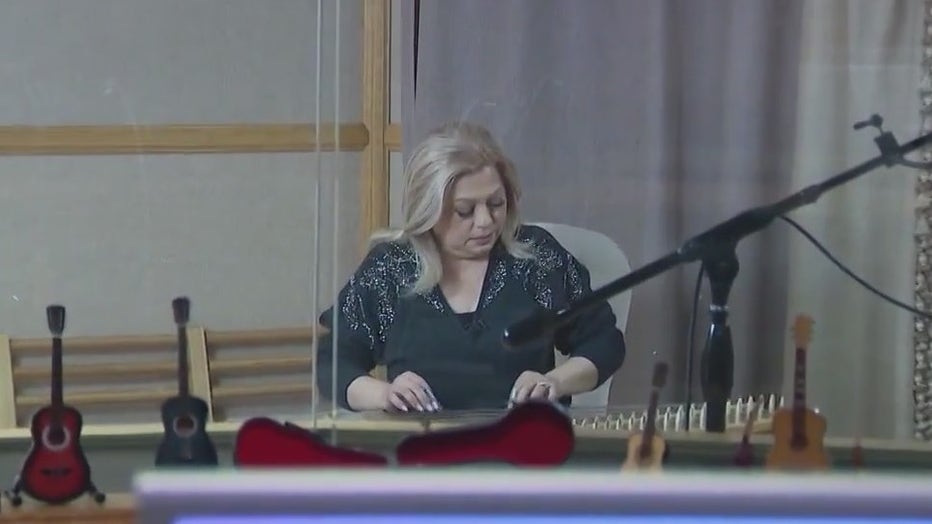Armenian History Month: Learn about the music of the ancient Kanun
Armenian History Month: Learn about the music of the ancient Kanun
The Armenian Kanun is an ancient instrument with a haunting and melancholic sound. As each string is plucked– a range of emotions are evoked.
LOS ANGELES - The Kanun instrument has been known through the ages as the 'Piano of the East" —or the Middle Eastern Harp. It is one of the most expressive instruments with a unique sound.
The Armenian Kanun is an ancient instrument with a haunting and melancholic sound. As each string is plucked– a range of emotions are evoked.
Lilit Stepanyan has been playing the Kanun for more than 40 years and began playing when she was 9 years old.
"I love the sound. And maybe in my whole life, I heard this sound. It was with me," she said.
SUGGESTED: Popular chef Ara Zada puts a unique twist to classic Armenian food
The Kanun is a traditional Armenian zither. It weighs about 5 pounds with strings that are stretched across a thin, flat body.

"Sometimes they use different kinds of woods, but most of the time they use walnut," explained Stepanyan.
There are approximately 82 strings and it takes years to master this versatile instrument.
"This instrument was my mom's favorite instrument. And then I fell in love with this instrument after playing it. I went to music school, then college, then I graduated from the conservatory. And then I came here to America," the artist said.
It’s used in a variety of music – from traditional Armenian folk songs to modern pop music. One can solo– play with the Armenian duduk or flute – or for a much deeper richer sound, as part of an orchestra.

For Stepanyan, the sound of the Kanun evokes a variety of emotions, including feelings of nostalgia, longing and hope.
"When I play this instrument, I feel like it cleans my soul and I feel better after practicing, after playing, after concerts," she said.
"I think music is a kind of therapy. I think music unites people. It gives more kindness and love," said Stepanyan.

